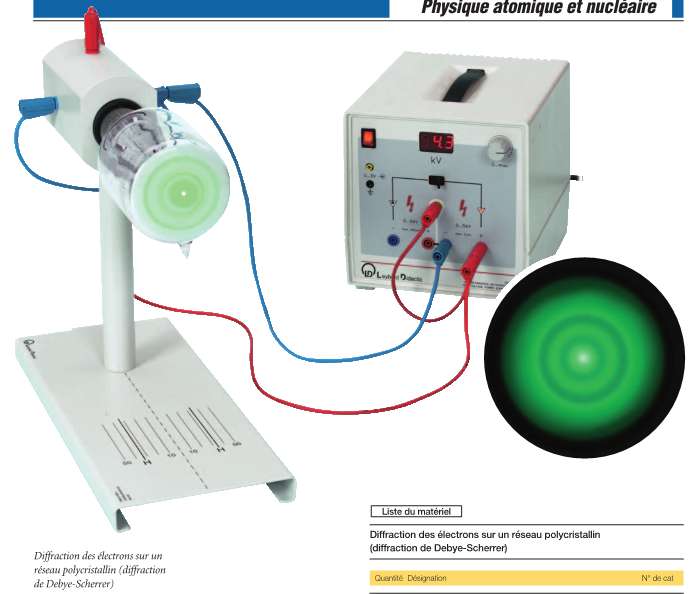http://www.physicisttv.com/videos/The%20Grand%20Design.pdfpage 66 :
In the double-slit experiment Feynman’s ideas mean the particles take paths that go through only
one slit or only the other; paths that thread through the first slit, back out through the second slit,
and then through the first again; paths that visit the restaurant that serves that great curried shrimp,
and then circle Jupiter a few times before heading home; even paths that go across the universe
and back. This, in Feynman’s view, explains how the particle acquires the information about
which slits are open—if a slit is open, the particle takes paths through it. When both slits are open,
the paths in which the particle travels through one slit can interfere with the paths in which it
travels through the other, causing the interference. It might sound nutty, but for the purposes of
most fundamental physics done today—and for the purposes of this book—Feynman’s formulation
has proved more useful than the original one.
From my quick reading of this thread, this has more to do with trying to understand Feynman's path integral. Unless someone has some extraordinary capability with written communication, trying to illustrate this principle is almost impossible on a public forum such as this.
So maybe a readable source that introduce what a Feynman path integral is might be useful. Try this one: http://scitation.aip.org/getpdf/servlet/GetPDFServlet?filetype=pdf&id=CPHYE2000012000002000190000001&idtype=cvips
Let's return to the real world.
In the real world, the electrons are not fairy beasts, but are used by industry and scientific research for more than a century. Vacuum diode exists for 1904, triode for 1907. Cathode ray tubes exist for 1907. X-Ray tubes are in use in radiography for the first World war.
Electron beams are also used for microscopy, by transmission or by scanning, in microprobes, so on.
They are not as good as X-Ray are in crystallography, for their poor parallelism and poor monochromaticity. However we obtained Laue diffractograms of carbide inclusions on a Siemens electronic microscope, just by modifying the focalization and diaphragming on the inclusion.
And electron beams are also used in nuclear industry, for very deep and narrow weldings.
The next step will be to take the example of a beam of electron mimicking the ray [tex]K \alpha_1[/tex] of molybdenum, at 0.709300 Å (17.47934 keV). What are the speed and the potential difference for that ?
First : how many wavelengths for a 30 cm "flight" ?
30 cm / 0.709300 Å/cycle = 4.23 milliards of wavelengths.
Momemtum : 9.3417 . 10
-24 kg.m/s
Speed, rated as non-relativist : 10,255 km/s
v/c : 0.0342 (3.42 %). OK, it is not relativist, or very little.
Gamma : 1.00059
Corrected speed : 10,249 km/s.
Kinetic Energy : 4.790 . 10
-17 J.
Potential difference : 299 V.
Time of flight for 30 cm : 29.27 ns.
In the frame of the electron : 29.29 ns.
How many broglian periods during this flight ?
3,619 milliards of periods during this flight.
Phase velocity : 87.69 millions of km/s.
Another question not yet answered here is how many times during this flight, the electron was at + c speed forward ?
3,619 milliards x 2 = 7,238 milliards times.
And 7,238 milliards times backwards at speed -c.
How much more time forward than backward ?
51.71 % time forward.
48.29 % time backward.
So is the
Zitterbewegung, according to the Dirac equation (1928), and the beating of negative and positive energy components.
So real electrons in the real world seem to have very very different properties than those postulated by Hawking and Mlodinow on one side, by Edwin F. Taylor, Stamatis Vokos, and John M. O’Mearac (and maybe Feynman himself) on other side.
Real electrons in a real flight in a CRT on Earth do not seem to have time to explore planet Jupiter...
Just compare to the physics of Santa Claus :
http://www.positiveatheism.org/writ/santa.htmand draw your conclusion yourself.
In the fairy tales Santa Claus visits 967.7 houses per second, and the electron in a CRT tube on Earth explores the planet Jupiter.
In the real world, we are trying to have better experimental values of the real width of an electron, depending of its momemtum and the length of its path. Here we seem to be in the 10-15 Å range, and if true, it is by far too narrow for a successful double slit experiment (too narrow or too fast, it is tight together).
Such equipments for Debye-Scherrer diffractograms with electrons are sold by Leybold Didactic for our classrooms :

Catalogue at :
http://www.systemes-didactiques.fr/include/physiquechimiebiosvt/tube.pdfThis tube seems no more available at
http://www.ld-didactic.de ([VP6.1.5.1] · Diffraction of electrons at a polycrystalline lattice (Debye-Scherrer diffraction)).
You see that they use higher voltages to obtain more Bragg reflections on a small screen.
The angular resolution is poor. We obtain far better results with [tex]K \alpha[/tex] of a metallic anticathode.
Now the question arises : what causes for such a poor angular resolution ?
- The crystallites in the metal or graphite sheet may be too small.
- Each incident electron may be too small. However, it must be at least three to four interatomic distances long, and five to six interatomic distances wide, otherwise not any diffractogram could be seen at all.
- Too much speed dispersion in the electrons beam.
- Too much angular dispersion in the electrons beam.
To know more on the length of coherence of an electron in a beam, one must make the electron interfere with itself. So in Aharonov-Bohm type of experiments, the speed and the accelerating voltage are much lower. As far as I know, the so proved length of coherence is in the magnitude of ten wavelengths, at least.
To be continued.
 Total des membres: 62
Total des membres: 62 Dernier: MvMarcus70
Dernier: MvMarcus70 Total des messages: 5084
Total des messages: 5084 Total des sujets: 2368
Total des sujets: 2368 En ligne aujourd'hui: 13
En ligne aujourd'hui: 13 Record de connexion total: 138
Record de connexion total: 138 Membres: 0
Membres: 0 Invités: 9
Invités: 9 Total: 9
Total: 9


